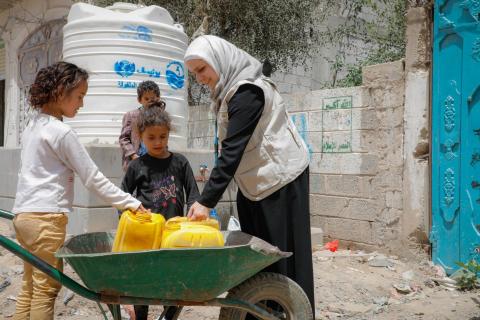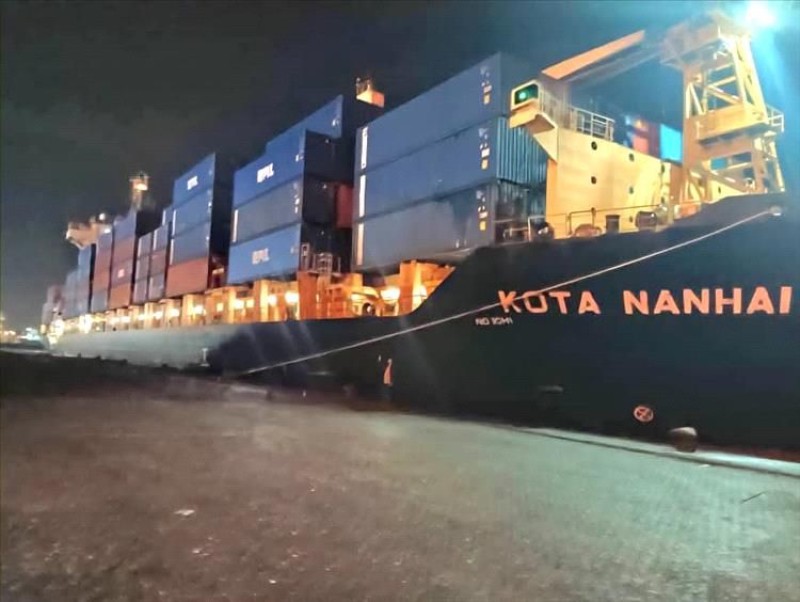FAO strengthens Desert Locust surveillance and control capacity in Yemen
Training workshop on Desert Locust surveillance and control concluded in Aden with three vehicles handed over to Ministry of Agriculture
7 February 2021, Sana’a -The Food and Agriculture Organization of the United Nations (FAO) jointly with the Ministry of Agriculture, Irrigation and Fisheries (MAIF) last week concluded a training workshop on Desert Locust surveillance and control in Aden. FAO also delivered three vehicles to MAIF under fund from the Kingdom of Saudi Arabia.
The five-days training workshop targeted 22 participants from local and central agriculture offices and aimed at enriching their knowledge and improve their skills in Desert Locust surveys, data collection and analysis, pest control tools, methods and mechanisms in addition to types of pesticides to be used for control operations and environmental and health standards including pesticides storage and handling and first aid in case of emergencies.
During the training workshop that is funded by the United Kingdom, FAO experts on Desert Locust carried out theoretical and practical sessions to ensure fully understanding and knowledge is reflected in field activities during surveillance and control activities.
In the closing ceremony, Hussein Gadain, FAO Representative in Yemen stressed the importance of joining efforts to face agricultural pests like desert locust which represents a real threat to national food security and livelihoods in Yemen and neighbouring countries. Gadain also appreciated the generous support given to FAO from partners like Belgium, Canada, United Kingdom, the World Bank and the Kingdom of Saudi Arabia, as well as the efforts and support extended by the Ministry of Agriculture and Irrigation to facilitate Desert Locust response in the country.
Handover ceremony of three vehicles for desert locust response in Yemen
During the training week, FAO handed over three vehicles to the Yemeni Ministry of Agriculture, Irrigation and Fisheries that are funded by the Kingdom of Saudi Arabia (KSA)in an official ceremony attended by the Minister of Agriculture and Irrigation and the FAO Representative and senior government officials. This comes as part of FAO’s efforts to strengthen the technical and institutional capacities of the Ministry of Agriculture to face the pest in infested areas. These vehicles will contribute to scale up of surveillance and control activities by agriculture offices’ field teams to curb Desert Locust outbreak in Yemen and enabling them to reach remote and hard to access areas.
During January 2021, FAO and Ministry of Agriculture efforts covered 207020 hectares throughout nine governorates: including Aden, Lahj, Abyan and Shabwah on the Gulf of Aden and Arabian Sea coasts and northern highlands of the country including: Hajjah, Amran, Hodeidah, Mahwait and Sana’a. Desert Locust upsurges and plagues can cause significant and widespread crop losses, which might affect national food security and agricultural livelihoods of the country which is already suffering from the ongoing conflict especially during the coming agricultural season crosscutting with the summer breeding areas.
Yemen has three seasonal breeding areas: (a) Winter breeding along the Red Sea including Hajjah and Hodeidah governorates and Gulf of Aden coastal plains including Abyan, Lahj, Shabwah, and parts of Albayda and Hadhramaut governorates from about November to March (b) Spring breeding in parts of the coastal area of Abyan and Shabwah governorates from about March to June and, (c) Summer breeding in the interior governorates of Aljawaf, Marib, Shabwah and Almaharah from about June to September.




